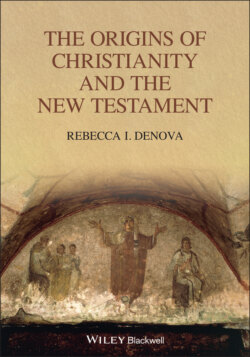Читать книгу The Origins of Christianity and the New Testament - Rebecca I. Denova - Страница 18
Myth
ОглавлениеWe often use the word “myth” to automatically designate “something false.” In the study of religion, myths are ways in which people understand experiences with the divine, through stories, images, and metaphors. By their very nature, myths are not subject to verification. Myths are multivalent, meaning they are subject to many different interpretations. Myths help to create a worldview to explain origins (where did we come from?), but more importantly they help to validate the social order of the contemporary world. Myths function to explain the ideals and institutions of society, gender roles, and law codes.
All religions have “origin myths,” set in primordial time that explain the beginning of the cosmos, gods, human beings, and sacred sites. The first eleven chapters of the book of Genesis are often described as “myth” in the sense that they explain origins. Myths utilize etiologies or explanations (e.g. the beginning of agriculture). Many of the towns and cities in the Mediterranean Basin had “foundation myths,” claiming a god or hero as their original ancestor.
Myths can be understood literally or as allegory, applied most often by the schools of philosophy and educated writers. They read myth as containing symbols that went beyond the basics to promote ideals or universals. Stories in the Bible were allegorically interpreted over the centuries by both Jewish and Christian writers.
